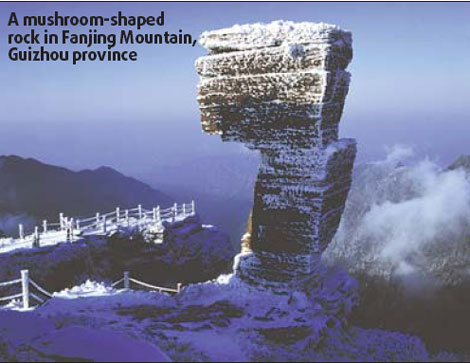
When Chinese people think of Guizhou province, they often picture a variety of ethnic cultures - it has 49 ethnic groups that compose more than one-third of the province's total population.
Yet the southwestern province has other compelling tourist attractions - well-preserved ancient towns that seem frozen in time:
Qingyan
Qingyan town, about 29 km west of the provincial capital Guiyang, was founded in 1378. Its appearance and layout today remain much as it was more than 600 years ago.
Qingyan means cyan-colored rocks. As the name indicates, many of its lanes, buildings and memorial arches are made of stone.
The lanes and walls made of cyan stone that have become a bit slippery after centuries of use now give off a faint shine.
Farmers carrying dangling loads on a pole over their shoulder occasional walk by, as do leisurely herders leading their cows along a lane.
It seems as if the past 600 years are condensed into the town's details, like delicately carved window frames and the stone or wooden countertops of street shops.
The 3-sq-km town has more than 30 Buddhist and Taoist temples, two Christian churches and clan halls for ancestor worship.
Longli
Surrounded by mountains, Longli town was established by soldiers as a fort in the Ming Dynasty (1368-1644).
Mostly from eastern provinces, including Jiangsu, Jiangxi and Anhui, the soldiers brought many of their hometown customs to their new outpost.
Like an island, the town was isolated from surrounded areas dominated by ethnic groups.
The town's residents, most of whom are offspring of the ancient army, for centuries had little contact with local groups. They did not begin intermarry with people outside the town until the 1950s.
Such a self-sufficient settlement ensured the town kept its identity with a strong imprint of Han nationality and without assimilation into the local ethnic groups.
Every Spring Festival - whether in a good year or not - residents came out, men and women with painted face masks, for dragon dances to celebrate the most important Chinese holiday.
Their wild celebrations, like their other customs, are likened to long-preserved wine with a strong aroma.